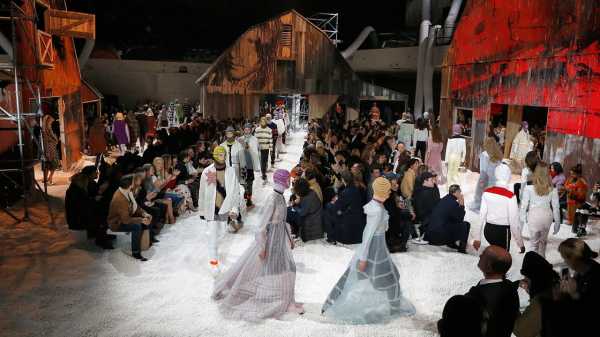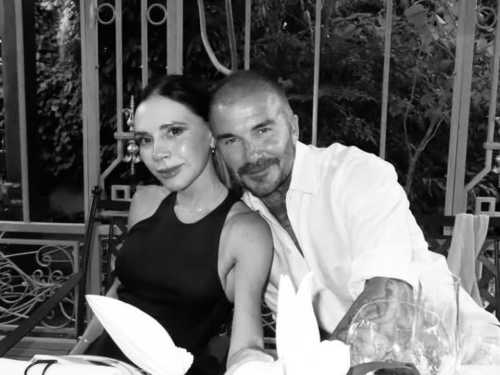 Week 2018 | />
Week 2018 | />
New York Fashion Week usually has editors and stylists zigzagging around town from show to show, as if they were competing in a frantic scavenger hunt, but this year’s fall collections were a little off. Gaps between significant shows left hours, even whole days, open. Members of the fashion crowd found themselves with time on their hands. One Italian stylist told me, her eyes wide in disbelief, that she had just gone to the movies, to see “Phantom Thread.”
Last fall, New York fashion week lost several of its tentpoles, including shows by the heavy hitters Proenza Schouler, Thom Browne, Altuzarra, and Rodarte, all of whom announced that they would be showing in Paris in the future. Kanye West is taking a time-out from showing his Yeezy line; he introduced his new collection via Instagram. Some of the New York-based designers who used to prop up the week seem to be challenging the tradition of having a fashion week at all. Tommy Hilfiger, who has been collaborating with Gigi Hadid on his recent collections, has been moving his show to different locations around the world, and without adhering to the traditional schedule. Opening Ceremony, which in the past has staged elaborate spectacles with its shows—including a play at the Metropolitan Opera, a parade of race cars disgorging models on a pier, and a beauty pageant featuring Whoopi Goldberg as a contestant—announced on Wednesday that it will hold its next fashion show at Disneyland, in March.
All these departures from convention made for a lopsided fashion week: Tom Ford and Jeremy Scott kicked things off on February 8th, Marc Jacobs closed out the festivities on the following Wednesday, and something of a chasm was left in between. Calvin Klein, on Tuesday, was one of the week’s highlights. The label’s newish designer, Raf Simons, dominated Milan and Paris for the past decade with his previous employers, Jil Sander and Christian Dior. Coming to America has made Simons less precious and less austere. On Tuesday, he covered the floor of the American Stock Exchange building with fifty thousand gallons of popcorn, forming a six-inch layer, through which guests waded; a few made snow angels in it. Weathered barns erected as part of the set were painted with Warhol images licensed for the collection, which featured ruffled cotton pioneer dresses and firemen’s coats.
Despite the week’s weird pacing, there was some news: Carolina Herrera took her final runway bow, ending a career of more than thirty-five years and turning the design reins over to a young man, Wes Gordon, who is thirty-one and has been dreaming up dresses for ladies who lunch since he was a teen-ager. Herrera will serve as her brand’s “ambassador.”
The fashion tribe will next migrate to London, Milan, and Paris, for those cities’ fashion weeks, which appear to be more robust than New York’s. Last week, Kering, the European luxury conglomerate that owns Gucci, Saint Laurent, and Balenciaga, announced that its profits rose an astounding fifty-six per cent in 2017. Flouting the escape-from-New York trend, one of Kering’s brands, Bottega Veneta, cancelled its usual show in Milan in order to hold a lustrous catwalk show and party in New York last weekend. The point was to celebrate its new flagship, on Madison Avenue, but the starry front row—which included Kering’s chief executive, François-Henri Pinault, his wife, Salma Hayek, and Julianne Moore—merely served to underscore the lack of pizzazz in the rest of the week.
Without the propulsive rhythm of one big show following another, the week felt drained of energy. The glitches stood out. At Oscar de la Renta, on Monday, someone forgot to remove the thin plastic film that covered the runway, which was made of cream-colored linen. The models drifted down the runway in a dazzling collection of embroidered dresses, crisp cotton blouses, and cozy oversized sweaters, but their heels made loud scrinchy sounds as they stepped on the sticky plastic. During the finale, more than a dozen models tripped on a bunched-up mass of the stuff. “It was a regrettable oversight by our outside production company,” a spokeswoman said.
The smattering of applause that followed Sunday evening’s Prabal Gurung show was lackluster, not because there was any particular disappointment in his sexy but classy collection, which the designer said was “an ode to strong women,” but because it was nearly 9:30 P.M., and people just wanted to get home. Narciso Rodriguez, who usually holds a bustling, celebrity-studded show in an 8 P.M. timeslot, downsized this season, instead inviting a couple of dozen editors and stylists to his Irving Place studio on Wednesday morning. We sat in a row on a single bench in his showroom, which had been painted black for effect. Models were spotlighted, one by one, in a small, carefully edited collection. “Just one good stripe look,” Rodriguez said afterward. He said that he had recently become a father and didn’t feel like doing the usual big evening event this year. “I think we get very comfortable with the theatre and the drama, but really it’s about making beautiful clothes,” he told me after the show.
Anyone who was looking for a feminist revolution had to get in the very long line at Alice + Olivia. The brand’s designer, Stacey Bendet, held one of the week’s most vibrant presentations, for more than eight hundred guests, at a Washington Street studio. Bendet, who wore thick black eyeshadow that made her look like an Edward Gorey character, created an Alice + Olivia “university,” where models dressed as elegant punk-rock students posed in tableaux vivants devoted to retelling women’s history. Bendet handed out copies of a “Bill of Rights” that she had written for the occasion. “We the Women of the United States of America,” it began, and went on to list, as its First Amendment, the “right of women to control their own reproductive lives.” She told me that she had done a lot of research on Google, which led her to discover that the original Bill of Rights was based in part on a pamphlet written, under a male pseudonym, by a woman, Mercy Otis Warren. “We Googled it, like, eight times to fact-check it,” Bendet said, looking victorious.
Sourse: newyorker.com






